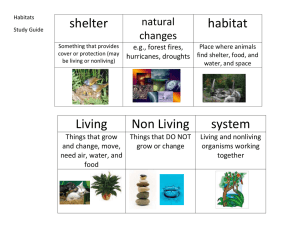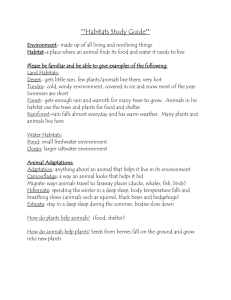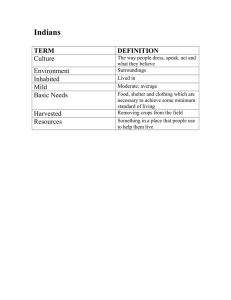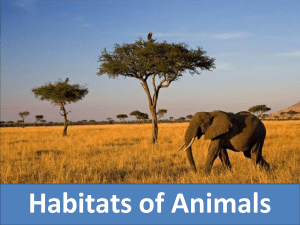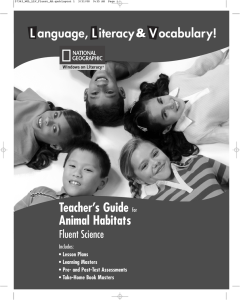Habitat Study Guide: Elementary Science SOL 2.5
advertisement
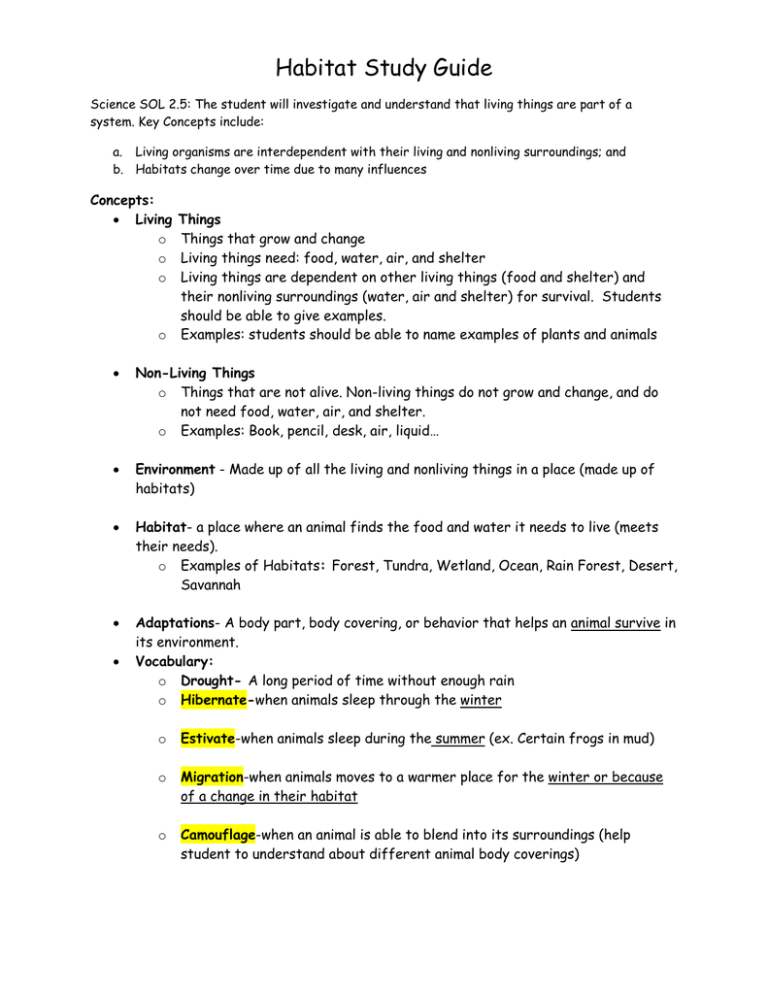
Habitat Study Guide Science SOL 2.5: The student will investigate and understand that living things are part of a system. Key Concepts include: a. Living organisms are interdependent with their living and nonliving surroundings; and b. Habitats change over time due to many influences Concepts: Living o o o Things Things that grow and change Living things need: food, water, air, and shelter Living things are dependent on other living things (food and shelter) and their nonliving surroundings (water, air and shelter) for survival. Students should be able to give examples. o Examples: students should be able to name examples of plants and animals Non-Living Things o Things that are not alive. Non-living things do not grow and change, and do not need food, water, air, and shelter. o Examples: Book, pencil, desk, air, liquid… Environment - Made up of all the living and nonliving things in a place (made up of habitats) Habitat- a place where an animal finds the food and water it needs to live (meets their needs). o Examples of Habitats: Forest, Tundra, Wetland, Ocean, Rain Forest, Desert, Savannah Adaptations- A body part, body covering, or behavior that helps an animal survive in its environment. Vocabulary: o Drought- A long period of time without enough rain o Hibernate-when animals sleep through the winter o Estivate-when animals sleep during the summer (ex. Certain frogs in mud) o Migration-when animals moves to a warmer place for the winter or because of a change in their habitat o Camouflage-when an animal is able to blend into its surroundings (help student to understand about different animal body coverings)
